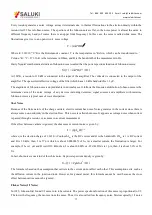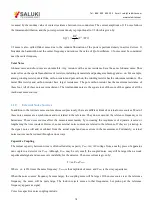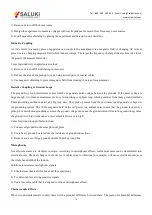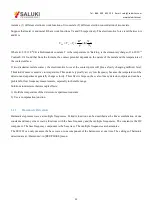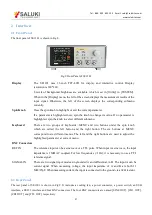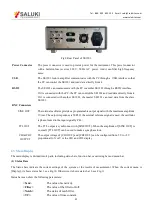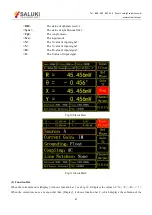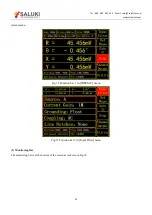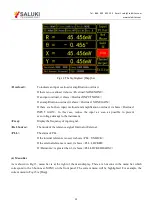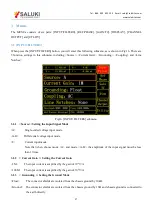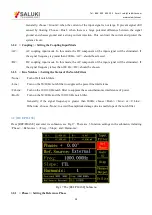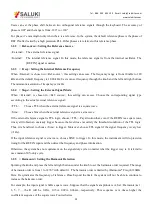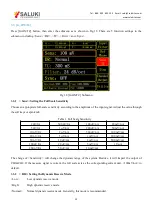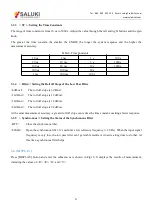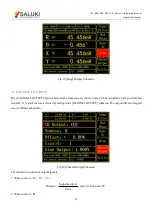
Tel: 886. 909 602 109 Email: sales@salukitec.com
www.salukitec.com
17
Every resistor generates a noise voltage across its terminals due to thermal fluctuations in the electron density within the
resistor itself. This is Johnson noise. The spectrum of the Johnson noise is flat, so the noise power is almost the same in
different frequency band (of course there is an upper limit frequency). In this case, the noise is called white noise. The
fluctuations give rise to an open-circuit noise voltage,
2
1
)
4
(
kTRB
V
Where k=1.38
×
10
-23
J/
°
K is the Boltzmann's constant. T is the temperature in
°
Kelvin, which can be transformed to
°
Celsius:
°
K=
°
C +273.16. R is the resistance in Ohms, and B is the bandwidth of the measurement in Hz.
Harry Nyquist's mathematical studies of Johnson noise revealed that the power spectrum function of Johnson noise is:
)
/
(
4
)
(
2
Hz
V
kTR
f
St
At 300
°
K, a resistor of 10 k
Ω
is connected to the input of the amplifier. The voltmeter is connected to the output of the
amplifier. The open-circuit effective voltage of the filter which has a 10 kHz bandwidth is 1.3
μ
V.
The amplitude of Johnson noise is unpredictable in normal cases. It follows the Gaussian distribution. Johnson noise is the
minimum value of the noise voltage of any devices including detectors, signal sources and amplifiers with resistors.
Johnson noise is a typical case of wave dissipation.
Shot Noise
Because of the finite nature of the charge carriers, electric current has noise. Noise generates in the current since there is
always some non-uniformity in the electron flow. This noise is called shot noise. It appears as voltage noise when current
is passed through a resistor, or as noise in a current measurement.
If the effect between carriers is ignored, the shot noise or current noise is given by:
2
/
1
)
2
(
B
qI
I
dc
where q is the electron charge of 1.6
×
10
-19
Coulomb, I
dc
is the DC current and B is the bandwidth. If I
dc
is 1 A DC current
and B is 10 kHz, then, I is 57 nA which is about 0.000006% of I
dc
. At a smaller current, the fluctuation is larger. For
example, if I
dc
is 1
μ
A and B is still 10 kHz, then, I is about 0.006% or -85 dB. If Idc is 1 pA, then, I is about 5.6% or 56
fA.
In fact, shot noise is one kind of the white noise. Its power spectrum density is given by:
)
/
(
2
)
(
2
Hz
A
qld
f
S
sl
The formula is based on the assumption that carriers in the current do not affect each other. This assumption exits, such as
the diffusion current in the junction diode. However, for general metal, this formula cannot be used because the cross
effect between carries cannot be ignored.
Flicker Noise (1/f Noise)
In 1925, Johnson first found 1/f noise in in tube currents. The power spectrum function of this noise is proportional to 1/f.
The lower the frequency, the more serious the noise. Thus, it is also called low frequency noise. Microscopically, 1/f noise















